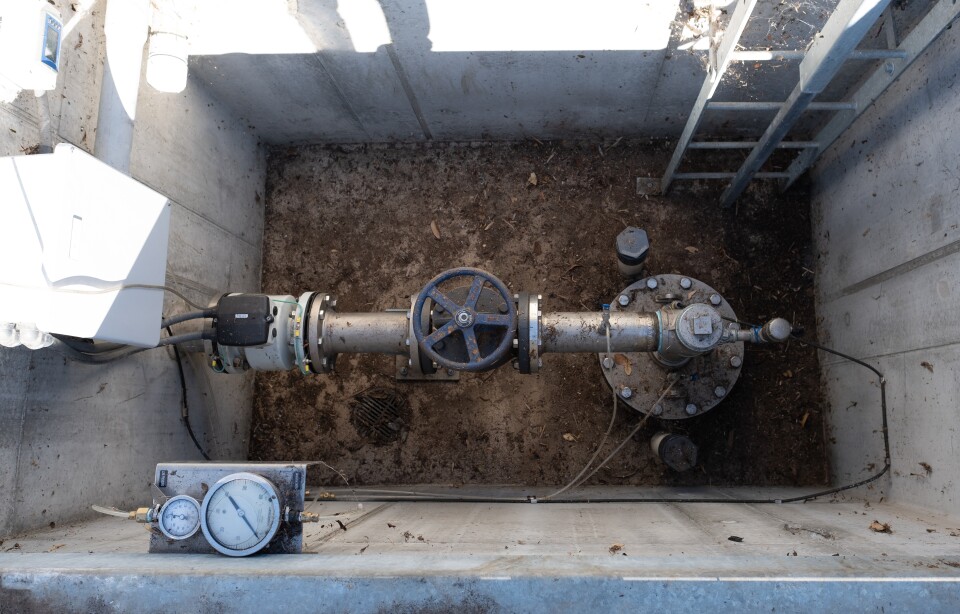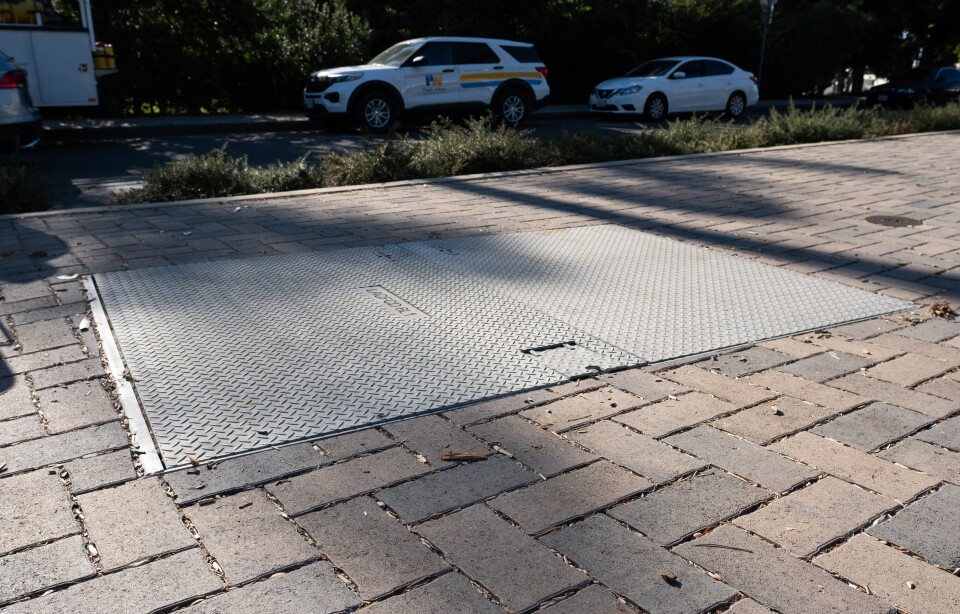Truth matters. Community matters. Your support makes both possible. LAist is one of the few places where news remains independent and free from political and corporate influence. Stand up for truth and for LAist. Make your year-end tax-deductible gift now.
LA’s Century-Long Battle To Keep The Ocean From Poisoning Our Drinking Water

If you were to run or bike from El Segundo to Palos Verdes, you’d have a stunning view of the ocean to your right, with beautiful homes and the mountains to your left and whole lot of traffic whizzing by.
However, there’d be no sign that you’re also traversing the site of a century-long battle between Los Angeles and the ocean, happening some 250 feet beneath you.
Tucked into random neighborhoods are 159 injection wells, spaced every 150 to 850 feet, pumping 9,000 gallons of water every minute into the permeable rock below, forming a defensive wall of water that’s keeping the sea from creeping inland and contaminating our freshwater supply.
Nearly invisible infrastructure
If you didn’t know what to look for, you’d have no idea that this massive infrastructure project was going on right under the oceanside communities people pay millions of dollars to live in.

Including in Hermosa Beach, which is where I went to check out one of the wells.
There, right next to a walking path was a set of boring looking pipes. The only indication that they were doing anything, being the sound of whooshing water and a gauge showing that 26 gallons per second were passing through.

Injection wells send freshwater into the earth, while observation wells help monitor for saltwater intrusion.

“Historically, there's enough fresh water in the aquifer to hold back the ocean, but over time, a lot of folks started pumping the water out and that caused the seawater to start coming in and filling in that void,” said Eric Batman, a senior civil engineer with the Los Angeles County Department of Public Works who oversees the seawater barrier operations.
“Normally it would probably take three to four weeks of non-injection to start to see elevated chloride levels in our observation wells."
A 100-year-old problem
As L.A.’s population grew, so did its thirst. Wells were dug to pull water from deep in the ground to satiate our needs, but groundwater is limited and was quickly taxed in the dry, fast growing region.
The first sign that there was a problem reportedly popped up in 1912, when water in Redondo Beach started to come up a bit salty. Then, it was water in Hermosa in 1915 and El Segundo in 1921. A drought started later that decade and led to even more pumping, and saltwater levels continued to climb.

The city of L.A.’s population increased 14 fold between 1900 and 1940, and by then the problem had gotten so bad that wells were being abandoned.
The science
We’d essentially thrown off the equilibrium that’d long existed underground between our coastal groundwater basins and the sea.
Water percolates into aquifers through permeable material like sand and gravel, flowing down from our hills, pooling and soaking in over time.

Along our coast, water from the ocean is also trying to sneak in through the permeable rock, but the pressure of the water in the aquifers was enough to keep the saltwater at bay.
Because water naturally flows from high to low pressure areas, when we dropped the pressure in our aquifers by pulling the water out faster than it could replenish, the sea was able to take advantage, move in and contaminate our drinking supplies.
The fix
The growing problem needed a solution, and in the 1950s, the first experimental injection wells went into place in Manhattan Beach.
The idea was that we didn’t necessarily have to refill the entire aquifer to equalize the pressure. That we could create a sort of freshwater wall underground by continuously injecting liquid through a series of pipes, strategically placed just a few hundred feet from each other, right where the sea was trying to break through.

By the 1960s, limits were set on the amount of groundwater that could be pulled out of the coastal aquifers across L.A., and the project continued to expand until current day.
Now, there are three different underground water walls — also known as barrier projects — stretching across the region:
The West Coast Basin Barrier project, the Dominguez Gap Barrier project and the Alamitos Gap Barrier project.
“L.A. and Orange County are probably the leading places on the planet in doing these things,” says Wes Danskin, research hydrologist with the United States Geological Survey.
How the wells are built
To create the series of interconnected wells, holes are dug by big machines, pipes are inserted — some of which are permeable themselves. That's then surrounded by a bunch of gravel, all in an effort to keep fine material like sand from clogging the pipe.
The well we visited in Hermosa was about 300 feet deep.

The wells need to be serviced every two to four years, and they need to be replaced completely at some point. The one we visited was newly drilled, right next to a well that’d been dug in the 1960s.
Sometimes saltwater is detected, and the pressure is increased as required to help push it out.
According to Batman with the Department of Public Works, on average about 75 to 80 percent of the West Coast Basin project is fed with recycled water.
In the case of a major earthquake, we could see both of our water supply and our energy infrastructure severely disrupted. And, as he said, within a couple of weeks the saltwater could start to make its way in.

“The groundwater would really be the contingency plan, if you will, to be able to provide water until those repairs can be made,” said Batman.
The climate change connection
Saltwater intrusion into freshwater aquifers is a problem for communities around the world, from Egypt to India to China and Taiwan.
The primary driver, much like here in L.A., is over drafting of groundwater. However, sea level rise could exacerbate the problem as well.
As the ocean creeps further inland, it exerts more pressure on the permeable material, raising the risk of contamination.
Injection wells with robust monitoring systems are expensive and not accessible everywhere.
“It's what first world countries do that have enough money and investment on the coast,” says Danskin with the USGS.
“A poor country basically doesn't have these options unless USAID or the World Bank helps them out.”
As conditions become more challenging here in L.A., Batman says that to push back the sea, we’d likely add even more wells in between the existing ones. Possibly further inland at some point.








